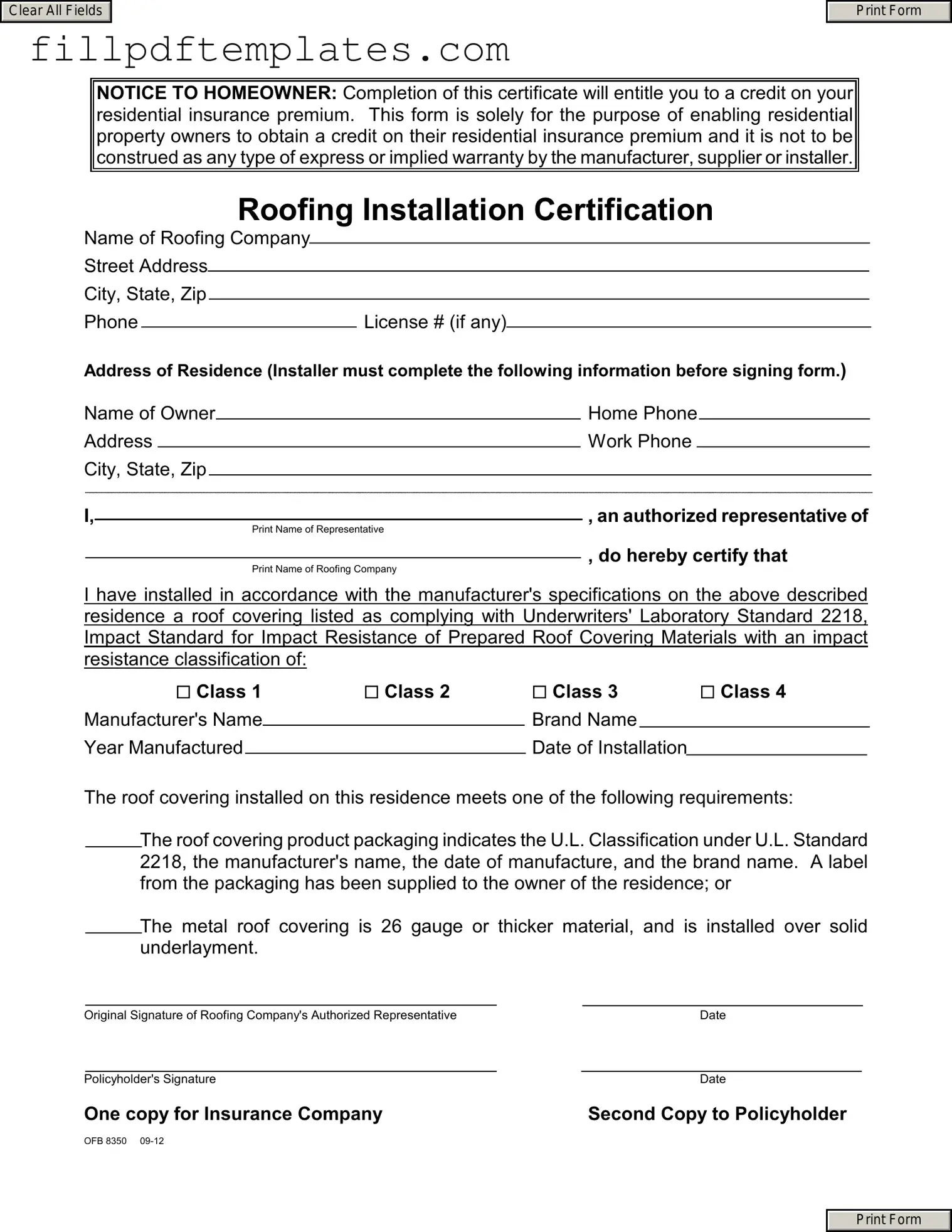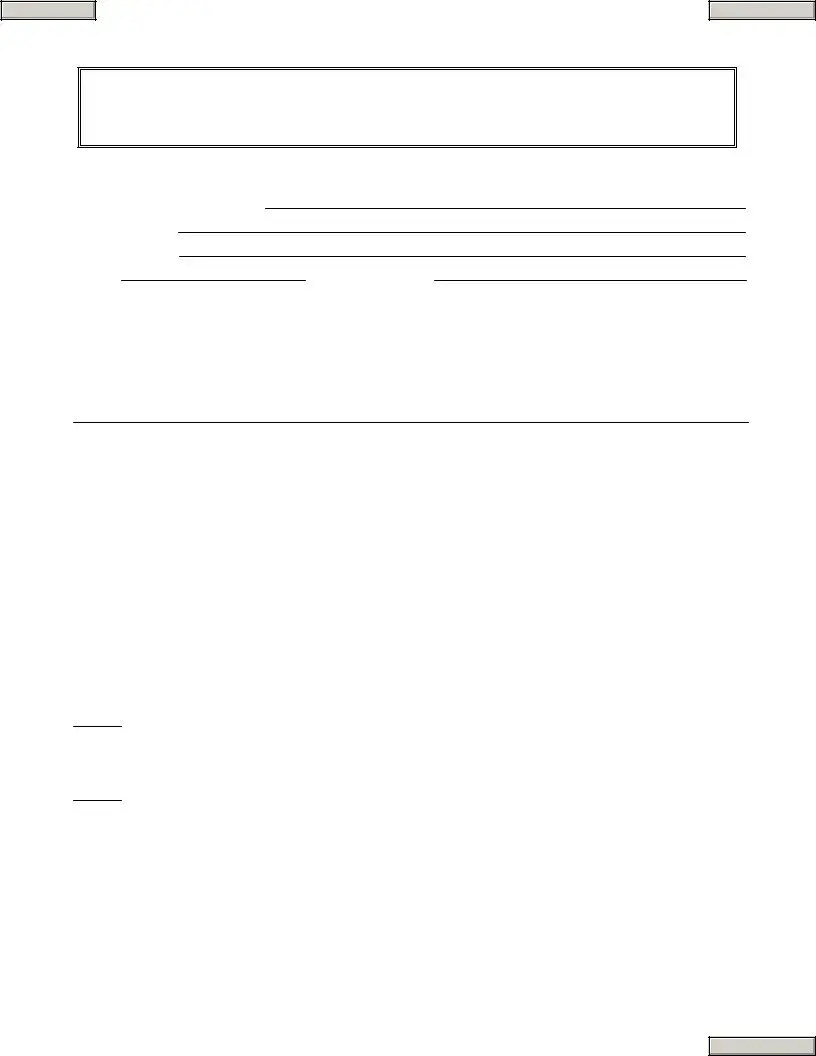The Roofing Certificate form is an essential document for homeowners looking to reduce their residential insurance premiums in Texas. This form, issued by the Texas Department of Insurance, serves as a certification that a qualified roofing company has installed a roof covering that meets specific impact resistance standards. Homeowners must provide detailed information about both the roofing company and their residence, including names, addresses, and contact numbers. The roofing company’s authorized representative must also attest to the installation, confirming that it complies with the manufacturer's specifications and Underwriters’ Laboratory Standard 2218. This certification does not imply any warranty from the manufacturer or installer but is strictly for premium reduction purposes. Additionally, the form requires the roofing company to indicate the impact resistance classification of the installed roof covering, ranging from Class 1 to Class 4. Proper labeling of the roofing materials is crucial, as it ensures compliance with regulations established after January 1, 1999. Homeowners should keep one copy of the completed form for their records while sending another to their insurance company. Misrepresentation on this form can lead to serious consequences, including charges of fraud.

